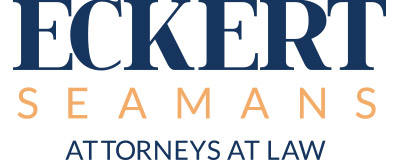Supreme Court of Pennsylvania Recognizes “Enterprise Liability” Theory as Valid Means of Piercing the Corporate Veil
October 19, 2021
INTRODUCTION
In Mortimer v. McCool, 255 A.3d 261 (Pa. 2021), the Supreme Court of Pennsylvania unanimously recognized the viability of the “enterprise” theory of liability, which is a means of holding affiliated corporations liable for judgments against their “sister” entities.
This type of corporate “veil piercing” is recognized in less than one-third of the states and Justice David Wecht, writing for the Court, stressed that enterprise liability should only apply in cases of “great injustice and inequity.” Although the circumstances giving rise to the theory typically involve “truly egregious misconduct,” the increased risk of litigation underscores the importance of employing best practices when operating a complex corporate enterprise.
PIERCING THE CORPORATE VEIL
A corporation is a separate legal person, solely responsible for the judgments and debts that it incurs. This limitation on liability, which shields directors, officers, and shareholders alike, is the “defining feature” of corporate law. However, limited liability also opens the door for insider abuse of the corporate form. To protect against this, courts will, in limited circumstances, “pierce the corporate veil” and hold those individuals liable for corporate obligations.
Pennsylvania has long recognized “vertical” piercing, which occurs when a court disregards the corporate form and holds the corporation’s shareholders, directors, or officers liable for its actions. “Horizontal” piercing, otherwise known as the “enterprise” theory of liability, allows courts to hold other corporate entities liable, because those individual entities share common ownership and are engaged in a larger, unitary commercial enterprise.
In recognizing horizontal piercing for the first time, the Court in Mortimer conceptualized the enterprise theory as triangular. For liability to attach, it must run up from the debtor corporation to the common owner and down from there to the targeted sister corporation. Enterprise liability thus depends upon the premise that affiliated corporations are siblings – “that they have common owners and/or an administrative nexus above the sister corporations.” Without that nexus, piercing “cannot be just.”
It is important to note that there is a “strong presumption” against piercing in Pennsylvania. Any court must therefore start from the “general rule” that the corporate entity should be recognized and upheld, unless “specific, unusual circumstances call for an exception.” Such a situation arises when “justice or public policy demand,” namely when the corporate form has been used “to defeat public convenience, justify wrong, protect fraud, or defend crime.” Common examples include when the corporation is used to protect funds from judgment, or when it used as a “piggy bank” for personal benefit. Single-purpose corporations that are part of a larger enterprise can be used to similar effect, by “siloing” liabilities to dilute and minimize risk.
MORTIMER V. MCCOOL
The Mortimer decision originated as a dram shop tort action after Ryan Mortimer was permanently injured when an intoxicated driver struck her car. That driver had been served liquor at a restaurant which was owned by McCool Properties, LLC but whose liquor license was owned by a separate entity, 340 Associates, LLC. Andy and Chris McCool were the sole owners of 340 Associates. Andy, Chris and their father, Raymond, owned McCool Properties.
Mortimer was ultimately awarded a judgment of $6.8 million against 340 Associates but was only able to recover a fraction of that amount because 340 had no insurance or significant assets beyond the liquor license itself. To collect the remainder of the judgment, Mortimer instituted a separate action to pierce 340 Associates’ corporate veil and hold McCool Properties liable under an enterprise theory of liability. Mortimer’s argument centered on the overlapping ownership between the two entities and the idea that McCool Properties was, in effect, an alter ego of 340 Associates.
Having never previously considered whether to adopt the enterprise theory, the Supreme Court weighed the approaches taken in those states that already had. Rejecting a “rigidly formalistic approach,” based on an “ever-increasing number of predefined factors,” the court adopted a two-part test to establish enterprise liability. First, “there must be such unity of ownership that the separate personalities of the corporation and the individual no longer exist” and second, “adherence to the corporate fiction” would sanction or promote “some fraud, wrong, or injustice.”
In adopting the test, the Supreme Court rejected the notion that recognizing enterprise liability as part of the piercing doctrine would “transform the commercial environment for the worst.” Justice Wecht stressed that there is no evidence of “scrupulous business owners” being “punished for availing themselves of the option to distribute related businesses across multiple corporate entities to secure liability protection and legal advantage.” Where the doctrine has been applied, the misconduct was “typically… truly egregious.”
In this case, the Court found that enterprise liability would not attach. There was not substantial common ownership between 340 Associates and McCool Properties because Raymond had no interest in 340. Notably, the court also found the facts insufficient to support piercing the veil vertically between 340 and the McCool brothers individually as that corporation’s owners, having found that the two appropriately separated their personal interests from those of 340.
PRACTICAL CONSIDERATIONS
Although the court ultimately found the facts insufficient to pierce the corporate veil in Mortimer, the ruling opens the door for increased litigation against corporations and their “sister” entities. It is important therefore to highlight certain best practices for those operating such enterprises.
First, businesses operating through separate, interrelated entities should be cognizant to diversify ownership. In Mortimer, the fact that Raymond was a one-third owner of McCool Properties but had no ownership interest in 340 Associates was determinative in finding a lack of common ownership between the two. Other corporations, particularly those that are closely held, would be well-advised to diversify ownership where possible.
Second, to avoid any appearance of impropriety, corporations must be cognizant of the sort of red flags that courts have historically looked for when weighing whether to pierce the corporate veil or not. These include undercapitalization of individual entities, failure to adhere to corporate formalities, and intermingling of corporate and personal affairs. Although the Mortimer court did not include these factors explicitly in their test, these are common pitfalls that Pennsylvania courts look to when applying the piercing doctrine more generally. Therefore, in addition to ensuring that each entity is adequately capitalized, owners must be careful to both hold and properly document annual meetings. Further, owners must be cognizant to maintain separate bank accounts, organizational documents, tax returns, and any other formalities that might indicate an intermingling of corporate affairs.
Click here to view a downloadable PDF of the legal update.
This Legal Update is intended to keep readers current on developments in the law. It is not intended to be legal advice. If you have any questions, please contact authors Derek Illar at 412.566.6771 or dillar@eckertseamans.com, Eric Brill at 412.566.6121 or ebrill@eckertseamans.com, or any other attorney at Eckert Seamans with whom you have been working.



